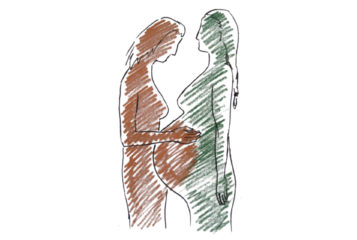The spat between Dolce & Gabbana and Elton John — apart from raising the somewhat baffling question of what exactly are 'chemical' babies? — highlights the more pertinent question of what are the consequences of IVF, surrogacy and other forms of assisted reproduction for parents and children.
By pure coincidence, this debacle hit the headlines in the same week as the publication of my new book, 'Modern Families: Parents and children in new family forms' by Cambridge University Press, which brings together the research carried out on parenting and the psychological well-being of children in a wide range of new family forms since these families emerged in the 1970s.
In the book, I make a distinction between new families and non-traditional families. The term 'new families' refers to family types that were either hidden from society and became visible through the growth of the women's and gay rights movements, or did not previously exist and arose from the introduction of in IVF and other assisted reproductive technologies. These include lesbian mother families, gay father families, families headed by single mothers by choice and families created by assisted reproductive technologies involving IVF, egg donation, donor insemination, embryo donation and surrogacy.
The term 'non-traditional families' generally refers to families headed by single parents, cohabiting parents and stepparents. These families result largely from parental separation or divorce and the formation of new cohabiting or marital relationships. New families represent a more fundamental shift away from traditional family structures than do non-traditional families formed by relationship breakdown.
While research on new family forms has its limitations, as does all research on human behaviour, the findings of the studies examined in the book show that the structure of families — the number, gender, sexual orientation and biological relatedness of parents and whether their children were conceived through assisted reproduction — is less important for children's psychological well-being than is the quality of family relationships. Children in new family forms appear to function well whereas non-traditional families are more likely to result in difficulties for children.
Why should this be? One reason is that non-traditional families generally experience greater adversity in terms of financial hardship, marital or relationship difficulties and parental mental health problems than do families formed by same-sex parents or through assisted reproductive technologies. Another is that parents in new family forms often struggle to have children against the odds. Many experience years of fertility treatment before becoming parents, others become parents in the face of strong social disapproval and still others surmount both hurdles in order to have a child. These extremely wanted children tend to be much loved by their parents when they eventually arrive.
This does not mean that all children in new family forms do well. Children flourish in warm, supportive and stable families, whatever their structure, and are likely to experience emotional and behavioural difficulties in hostile, unsupportive and unstable families, whatever their structure.
Children's wellbeing depends not just on their families but also on their communities and the geopolitical context in which they are raised. In recent years, President Goodluck Jonathan of Nigeria signed into law a bill that banned same-sex marriage, gay groups and shows of same-sex public affection; in Uganda, a bill allowing greater punishments for gay people and for those who fail to turn them in to the police — a toned down version of the original bill that included the death penalty for some aspects of same-sex behaviour — was passed by the nation's parliament; President Putin of Russia discouraged lesbian and gay people from attending the Winter Olympic Games; and Pope Francis came out against same-sex civil unions and adoption by same-sex couples. It is stigmatisation outside the family, rather than relationships within it, that creates difficulties for children in new family forms.
As the US Supreme Court is preparing to rule on same-sex marriage - and the signs are that that the ruling will be in favour of marriage equality nationwide — the Christian right have ratcheted up their anti-gay marriage campaign by using flawed research, commissioned and funded by their own organisations, to make the case that lesbian and gay families are bad for children. There has been similar opposition to the use of assisted reproductive technologies to create families, particularly when donated gametes, embryos or surrogacy are involved. Criticism of these families is not new. Nor are politically motivated attempts to discredit the academics whose research has shown the children to be no different from children in traditional families. What is new is the deliberate strategy of conducting sham research that shows children in new family forms to be at risk of psychological harm and dressing this up as science.
The view that children in modern families would experience psychological problems used to be based on prejudice and assumption in the absence of research on the actual consequences for children of growing up in new family forms. Empirical evidence played an important role in countering false beliefs. Today the challenge is not simply to conduct research but also to be vigilant about the quality of this research and the motivations and provenance of those who carry it out.






Leave a Reply
You must be logged in to post a comment.